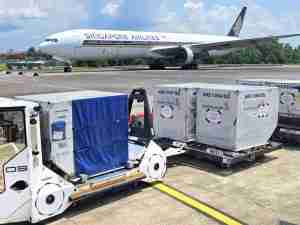An aviation sustainability alliance that includes United Airlines Holdings Inc. and other carriers, corporate customers like Microsoft Corp. and the Environmental Defense Fund has released a new tool aimed at promoting the use of cleaner fuels and tracking their impact.
The SAFc Registry, the result of years of research and testing, tallies up the emissions benefits of new aviation fuels that airlines blend into jet kerosene on flights. So-called sustainable aviation fuels can be made from a variety of feedstocks, from animal fats to forestry products, each with its own emissions profile. They require more sophisticated tools to accurately assess how much they reduce CO2 emissions.
“We think it’s the best in class,” said Laura Hutchinson, aviation manager for climate-aligned industries at RMI, a Boulder, Colorado-based non-profit formerly known as the Rocky Mountain Institute. “We provide an unprecedented level of transparency to the users and the public.”

RMI developed the tool along with the Environmental Defense Fund and others including the Sustainable Aviation Buyers Alliance, which counts United, Microsoft, Alaska Airlines, Amazon.com Inc., United Parcel Service Inc. and Boeing Co. on its roster.
The registry is essentially a receipts mechanism that serves two purposes: One is to track the production, distribution and use of sustainable aviation fuels throughout their life cycle, to give an accurate tally of their emissions impact compared with traditional jet fuels.
The other goal is to stimulate the use of SAFs by creating certificates that exist apart from the physical fuel, which is in short supply and still not available at most airports.
Creating trusted, verifiable certificates is meant to stimulate demand by encouraging buyers to pay for SAFs no matter where they catch a flight. The funds can then be used to pay for SAFs pumped onto planes where the fuel is available. Credit is divided up accurately among the participants, eliminating mistakes such as double counting.
“The opportunity here at a high level is to speed up the adoption of technologies that will help decarbonize critical sectors faster than they would be otherwise,” Hutchinson said. It gives participants “the confidence that what they’re claiming actually happened.”









